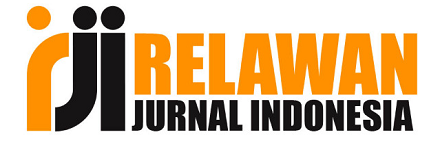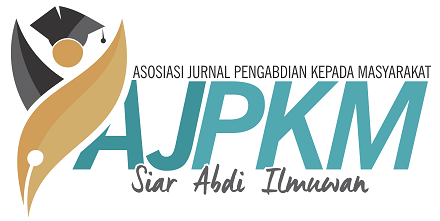Pengentasan buta aksara berbasis pendekatan “semua anak cerdas†untuk guru SD
DOI:
https://doi.org/10.33474/jipemas.v4i3.10884Keywords:
workshop, literacy, numeracy, elementary teacherAbstract
This service activity aims to improve the literacy and numeracy skills of elementary school (SD) children in Karang Sidemen Village, North Batukliang District, Central Lombok Regency through the "All Smart Children" Program which trains teachers regarding the urgency of learning basic literacy and numeracy for children. , and how to teach basic literacy and numeracy using the TaRL (Teaching at the Right Level) method. The activity is carried out in stages, namely 1) Coordination meeting, 2) Simulation of material presentation, 3) Preparation of activity logistics, 4) Implementation of workshop activities consisting of 2 waves, and 5) Evaluation of success indicators seen from the increase in scores on pretest-posttest which are grouped into 4 levels. There are differences in the characteristics of low-grade teachers and high-grade teachers during the training activities. Based on the results of the pretest and posttest, it is known that there are 24 out of 31 participants who experienced an increase in level. Workshop activities can be considered quite successful with the percentage of success of training activities in general is 77.41%.References
Al-Barhamtoshy, H., Abdou, S., & Rashwan, M. (2014). Mobile technology for illiterate education. Life Science Journal, 11(9), 242–248.
Ali, S. M. (2014). Council for Innovative Research. Journal of Advances in Chemistry, 10(1), 2146–2161.
Banerji, R., & Chavan, M. (2016). Improving literacy and math instruction at scale in India’s primary schools: The case of Pratham’s Read India program. Journal of Educational Change, 17(4), 453–475. https://doi.org/10.1007/s10833-016-9285-5
Chakrabarti, R., Prakash, K. S., & Arora, M. (2018). Analysis of education interventions in Andhra Pradesh. In India Consensus (1st ed.). Andhra Pradesh Priorities, Copenhagen Consensus Center.
Duflo, A., & Kiessel, J. (2014). Every Child Can, Every Child Counts: An evaluation of the Teacher Community Assistant Initiative (TCAI) Pilot Programme in Ghana. Innovations for Poverty Action (IPA), 1(March), 1–27.
Hwa, Y., Kaffenberger, M., & Silberstein, J. (2020). Aligning Levels of Instruction with Goals and the Needs of Students ( ALIGNS ): Varied Approaches , Common Principles. RISE: Research on Improving Systems of Education, 2020(22), 1–25.
Kim, M. K., McKenna, J. W., & Park, Y. (2017). The Use of Computer-Assisted Instruction to Improve the Reading Comprehension of Students With Learning Disabilities: An Evaluation of the Evidence Base According to the What Works Clearinghouse Standards. Remedial and Special Education, 38(4), 233–245. https://doi.org/10.1177/0741932517693396
Lakhsman, S. (2019). Improving reading and arithmetic outcomes at Pratham ’ s approach to teaching and learning Improving reading and arithmetic outcomes at scale : Teaching at the Right Level ( TaRL ), Pratham ’ s approach to teaching and learning. Revue Internationale d’éducation de Sèvres, 1(June), 1–6.
Luke, A., Elkins, J., Weir, K., Land, R., Carrington, V., Dole, S., Pendergast, D., Kapitzke, C., Kraayenoord, C. Van, Moni, K., Mcintosh, A., Mayer, D., Bahr, M., Hunter, L., Chadbourne, R., Bean, T., Alverman, D., & Stevens, L. (2014). A Report about Literacy and Numeracy. In Commonwealth Departement of Education Science & Training (Vol. 1, Issue August). The University of Queensland.
Meeks, L., Kemp, C., & Stephenson, J. (2014). Standards in literacy and numeracy: Contributing factors. Australian Journal of Teacher Education, 39(7), 106–139. https://doi.org/10.14221/ajte.2014v39n7.3
Sidiq, D. A. N., Fakhriyah, F., & Masfuah, S. (2020). Partisipasi Guru Pelaksanaan Bimbingan dan Konseling di SD Kota Mataram NTB. Progres Pendidikan, 1(2), 99–105.
Slater, H., Davies, N. M., & Burgess, S. (2012). Do teachers matter? measuring the variation in teacher effectiveness in england. Oxford Bulletin of Economics and Statistics, 74(5), 629–645. https://doi.org/10.1111/j.1468-0084.2011.00666.x
Sumardi, K. (2019). Adult Education through Multiple Method For Poor Rural Illiterate Women in Indonesia. Journal of Education and Learning (EduLearn), 6(4), 243. https://doi.org/10.11591/edulearn.v6i4.169
Sutisna, D., Indraswati, D., Nursaptini, Novitasari, S., & Sobri, M. (2020). Penerapan Program Pendidikan Inklusi di SDN 1 Sangkawana Lombok Tengah. Progres Pendidikan, 1(2), 115–128. http://prospek.unram.ac.id/index.php/PROSPEK/article/view/15
Tariq, V. (2014). Numeracy, Mathematical Literacy and the Life Sciences. MSOR Connections, 4(2), 25–29. https://doi.org/10.11120/msor.2004.04020025
Woodcock, S. (2011). A Cross Sectional Study of Pre-service Teacher Efficacy Throughout the Training Years. Australian Journal of Teacher Education, 36(10), 23–34.
Wyatt-Smith, C., Gunn, S., & Elkins, J. (2011). Multiple perspectives on difficulties in learning literacy and numeracy. In Multiple Perspectives on Difficulties in Learning Literacy and Numeracy (Issue December). https://doi.org/10.1007/978-1-4020-8864-3
Downloads
Published
How to Cite
Issue
Section
License
.









